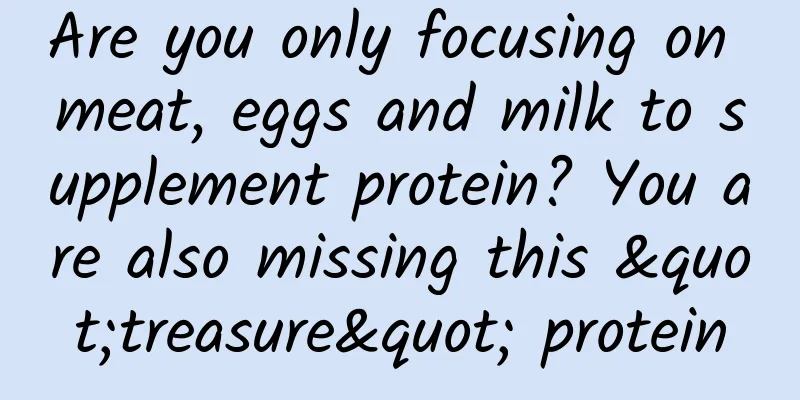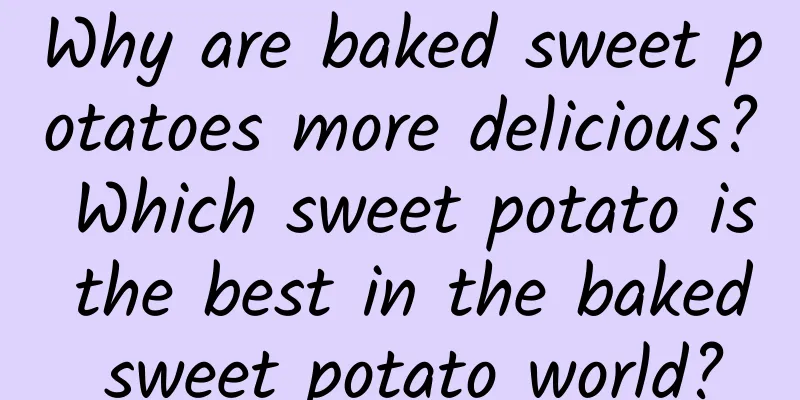[Creative Cultivation Program] The mystery of the origin of mitochondria: How was the energy factory of eukaryotic cells built?
![[Creative Cultivation Program] The mystery of the origin of mitochondria: How was the energy factory of eukaryotic cells built?](/upload/images/67f25b3c53b12.webp)
|
Regarding the origin of mitochondria, scientists have proposed two different hypotheses - endosymbiotic origin and non-symbiotic origin. As the name suggests, endosymbiosis is the symbiotic evolution of the ancestors of eukaryotic cells and the primitive bacteria they engulfed. Compared with the non-symbiotic origin, there are more results that support the endosymbiotic origin. However, the endosymbiotic origin itself is also controversial. The ancestors of eukaryotic cells need a lot of energy to engulf bacteria, and at this time, the energy-generating mitochondria have not evolved. This becomes a question of which came first, the chicken or the egg: which came first, the engulfment or the mitochondria? Written by Nanzhi We all learned about mitochondria in biology courses in middle school. Mitochondria are a type of organelle commonly found in eukaryotic cells (there are also a few eukaryotic cells that do not have mitochondria, such as parasites such as Giardia and Trichomonas). Because it is the main place for cells to carry out aerobic respiration and is the energy production factory in cells, we also call it the "power plant" of cells. Where the mitochondria in eukaryotic cells come from is related to the origin of eukaryotic organisms and is an important topic in biological evolution research. There are two hypotheses about the origin of mitochondria: endosymbiont hypothesis and non-symbiotic origin. Each of these two hypotheses can explain some aspects of mitochondria, so each has its own supporters. Discovery of mitochondria In 1850, Swiss-German biologist and anatomist Rudolph Kolliker observed mitochondria in experiments, isolated and studied them, and described their shape and size, but he was not clear about its function and internal structure at the time, so he did not name it. By the 1880s, with the development of microscopic technology, the magnification of microscopes was greatly improved. When using a high-power microscope to study the submicroscopic structure of cells, German pathologist and histologist Richard Altmann found a large number of particles in energy-requiring cells (such as muscle cells). In 1886, he invented a staining method to identify these particles and clearly saw their distribution in cells under a microscope. He speculated that these particles were not part of the cells themselves, but bacteria that coexisted with the cells, so he named these particles "Bioblasts". In 1897, German biologist Carle Benda discovered that there were many protozoa, which were sometimes linear and sometimes granular in shape, so he named them mitochondria. Since then, the scientific community has been using mitochondria as the official name of this type of particle. Later, in the study of mitochondrial function, scientists discovered that mitochondria are the place where the tricarboxylic acid cycle, electron transfer, and oxidative phosphorylation occur in cells, thus determining that mitochondria are the site where eukaryotic cells perform energy conversion. Where do mitochondria come from? When Richard Altmann observed mitochondria, he proposed that this structure in the cell is similar to bacteria, and is an organism that coexists in cells and can live independently, but there was no substantial evidence to prove this. In the 1920s, American biologist Ivan E. Wallin proposed the hypothesis that mitochondria originated from endosymbiosis, that is, mitochondria evolved from bacteria swallowed by cells, but the scientific community did not recognize his hypothesis at the time. It was not until the 1970s that American biologist Lynn Margulis proposed a more complete theory of endosymbiosis: primitive eukaryotes in some cases swallowed Gram-negative aerobic bacteria, and these aerobic bacteria gradually evolved and adapted to each other while coexisting with primitive eukaryotes, reaching a mutually beneficial symbiotic relationship and gradually forming mitochondria. In this symbiotic system, the host (aerobic bacteria) obtains nutrients from the host (primitive eukaryotic cells), while the host can use the energy produced by the host, thus increasing the competitiveness of the symbiont. This hypothesis has received strong support from the scientific community, and there has been a lot of evidence to prove the scientific nature of the hypothesis. First, mitochondria have independent genetic material - mitochondrial DNA and RNA, which is different from the genetic material of the cell nucleus of eukaryotes and is more similar to that of bacteria. Second, when cells reproduce themselves, mitochondria also proliferate and distribute at the same time, with independence and continuity. Its division and proliferation are completed through constriction, similar to bacteria. Third, mitochondria themselves have an independent and complete protein synthesis system, and most of the characteristics of this synthesis system are similar to the bacterial protein synthesis system, but different from the eukaryotic cell protein synthesis system. Fourth, mitochondria have an inner membrane and an outer membrane; the inner membrane is similar to the bacterial plasma membrane, and the outer membrane is similar to the inner membrane of eukaryotic cells. Biologists speculate that during the formation of the symbiotic system, when the host engulfed the parasitic aerobic bacteria, the host's inner membrane wrapped around the host and formed the outer membrane of the mitochondria. Fifth, the hypothesis states that during evolution, most of the genetic information of aerobic bacteria has been transferred and merged into host cells. Recent studies have found that the genetic information of respiratory bacteria or cyanobacteria exists in the nucleus of eukaryotic cells, which confirms the hypothesis. Sixth, the genetic code of mitochondria is more similar to the genetic code of Proteobacteria, and it is believed that mitochondria come from α-Proteobacteria ( α -Proteobacteria) . Seventh, similar symbiotic phenomena still exist in existing living organisms, such as Paramecium engulfing cyanobacteria to form a symbiotic body. There are also some unexplained problems with the origin of endosymbiosis. The engulfed aerobic bacteria have oxidative metabolic pathways, and this ability obviously gives them a greater advantage than the host that engulfs them in the competition for survival. So why is this aerobic bacterium at the bottom, being engulfed as a host and transferring its genetic material to the host cell? This does not conform to the laws of evolution. In addition, the endosymbiotic origin hypothesis cannot explain how the cell nucleus, the control center of the cell, originated. Non-symbiotic origin hypothesis After the endosymbiotic origin hypothesis emerged, opponents supporting the non-symbiotic origin hypothesis also emerged. The non-symbiotic hypothesis speculates that eukaryotic cells originated from an aerobic bacterium. During the evolution of this bacterium, some of the cell membranes with respiratory functions gradually invaginated, enveloping part of the genetic material, forming mitochondria that have both independent genetic material and respiratory function and membrane structure. There is also some evidence for the non-symbiotic origin hypothesis. For example, some primitive aerobic bacteria now have pseudo-mitochondrial structures, which are formed by the invagination and folding of the cytoplasmic membrane and have respiratory functions; the structures with respiratory functions in prokaryotic cells can be seen as the prototypes of today's mitochondria, so it is speculated that mitochondria evolved rather than formed by phagocytic symbiosis; the continuity of the eukaryotic nuclear membrane and mitochondrial membrane indicates that mitochondria may have originated from the invagination of the cell's own inner membrane system, rather than from symbiotic bacteria. Controversy in the endosymbiotic origin hypothesis Although the endosymbiotic origin hypothesis has some unexplained problems, it provides more evidence than the non-endosymbiotic origin hypothesis, so it has become the most mainstream theory of the origin of mitochondria. Within the endosymbiotic origin hypothesis, two schools of thought have emerged based on the different times when mitochondrial endosymbiosis occurred. One hypothesis is called the "Mito-late" models. They believe that before the host engulfed the aerobic α-proteobacteria (now there is a lot of evidence that mitochondria evolved from it), it had already formed a nucleus through different pathways and had the characteristics of eukaryotic cells (already had a nucleus, a dynamic cytoskeleton, an endomembrane system), and had primitive phagocytic function. In other words, the mitochondrial ancestor (α-proteobacteria) entered the host (the original eukaryotic cell) relatively late. Another hypothesis proposed is called the "Mito-early" models. They believe that the host (prokaryotic cell) first formed a symbiotic relationship with aerobic α-proteobacteria to form a prokaryotic cell with mitochondria. After possessing this power plant, it then evolved eukaryotic characteristics such as the cell nucleus and endomembrane system. The point of contention between the two factions focuses on the time point when the mitochondrial ancestor (α-proteobacteria) entered the host. Why is this time point so important? How did the mitochondrial ancestor enter the ancestor of eukaryotic cells? This is an extremely important point of discussion. Some scientists believe that it entered through phagocytosis, while others believe that it was only after the cell had mitochondria that the cell was able to phagocytose. So the question turns to phagocytosis. Phagocytosis is the process by which certain cells swallow microorganisms or small objects by deforming their bodies. This seemingly simple process actually requires a lot of energy and the cells need to have a dynamic cytoskeleton and membrane transport capabilities. If cells need a lot of energy to engulf bacteria, they cannot engulf the ancestors of mitochondria without the energy factory of mitochondria. However, how can mitochondria become the energy factory of cells if the ancestors of mitochondria have not been engulfed? In this way, it is like entering a time vortex. Which came first, the chicken or the egg? In other words, which came first, the mitochondria or the engulfment? If phagocytosis came first, then the ancestor of eukaryotic cells had already evolved to a certain extent when it engulfed the ancestor of mitochondria, and the arrival of mitochondria was just the icing on the cake for the evolution of eukaryotic cells. This is the late mitochondrial hypothesis. However, if mitochondria came first, and mitochondria provided a lot of energy for the ancestors of eukaryotic cells, because of this energy factory, the ancestors of eukaryotic cells were driven to evolve and formed the subsequent eukaryotic cells, then mitochondria were a timely help for the evolution of eukaryotic cells. This is the early mitochondrial hypothesis. The debate over the early and late models of mitochondrial endosymbiosis has not yet been concluded. The two schools each have their own evidence and have put forward many hypotheses. For example, in 1998, Bill Martin and Miklos Muller proposed the "Hydrogen Hypothesis" [1]: a hydrogen-requiring, methane-producing archaeon fused with a hydrogen-producing α-proteobacteria as a host, and the two relied on each other to form a stable symbiotic relationship. This model shows that after the endosymbiosis of the mitochondrial ancestor, the mitochondria that produced a large amount of energy triggered the occurrence of eukaryotes, indicating that mitochondria came first before eukaryotic cells and phagocytosis. This hypothesis is the most famous early mitochondrial model. However, scientists who question this hypothesis believe that the process of producing methane in this model is very complicated and requires a large amount of coenzymes, which are not found in today's eukaryotes. The late mitochondrial hypothesis includes the phagocytosing archaeon model (PhAT) proposed by Anthony M. Poole and Nadja Neumann in 2011**[2] , Joran Martijn and Thijs JG Ettema [3] in 2013; the symbiotic hypothesis proposed by Lopez Garcia et al. [4] in 2006, and the endosymbiotic model proposed by Pittis Alexandros et al. [5]** in 2016. In these models, they all believe that mitochondria were formed late, especially the phagocytosing archaeon model, which believes that the phagocytic mechanism is a prerequisite for the fusion of the mitochondrial ancestor and the eukaryotic cell ancestor. Overall, the early mitochondrial hypothesis is more popular today. Looking for new evidence In February this year, a paper published in Molecular Biology and Evolution**[6]** provided additional evidence for the late mitochondrial hypothesis through experiments. This paper was published by the team of Lionel Guy, an evolutionary microbiologist at Uppsala University in Sweden. They sequenced bacteria of the Legionella order, which are intracellular parasites that can grow inside eukaryotic cells. By analyzing the genomes of 35 Legionella species, they constructed the evolutionary history of Legionella and its relationship with early hosts. Guy's team traced back through the biomarker Okenone and inferred that the first Legionella ancestor that adapted to the host existed 1.89 billion years ago. In other words, at this time point of 1.89 billion years, the ancestor of Legionella had already infected the ancestor of eukaryotes, and this infection was carried out through phagocytosis, which can also prove from the side that there was a phagocytic mechanism at this time. However, many current studies believe that cells containing mitochondria first appeared nearly 1.5 billion years ago, which is later than the time when the phagocytic mechanism existed. In this way, the emergence of mitochondria was after the ancestor of eukaryotic cells had phagocytosis-phagocytosis first, and then mitochondria, providing evidence for the late mitochondrial hypothesis. However, some scientists have proved that mitochondrial endosymbiosis was very early, and some believe it was between 1.21 billion and 2.053 billion years ago, and some even believe it was between 2 billion and 2.4 billion years ago. If the time of mitochondrial endosymbiosis is so early, then using Professor Guy's evidence cannot prove that phagocytosis is earlier than the formation of mitochondria. The debate on the early and late stages of mitochondrial endosymbiosis remains inconclusive. There are still many complex details about the origin of mitochondria that need to be studied and explained, but no matter what the conclusion is, the facts prove that the combination of the ancestors of eukaryotic cells and mitochondria has produced a huge competitive advantage in survival. This strong competitiveness and continuous evolution have formed our colorful world today, including us in this world. Main references [1] Martin W, Müller M. 1998. The hydrogen hypothesis for the first eukaryote. Nature 392(6671):37–41. [2] Poole AM, Neumann N. 2011. Reconciling an archaeal origin of eukaryotes with engulfment: a biologically plausible update of the Eocyte hypothesis. Res Microbiol. 162(1):71–76. [3] Martijn J, Ettema TJ. 2013. From archaeon to eukaryote: the evolutionary dark ages of the eukaryotic cell. Biochem Soc Trans. 41(1):451–457. [4] Lopez-Garcia P, Moreira D. 2006. Selective forces for the origin of the eukaryotic nucleus. Bioessays 28(5):525–533. [5] Pittis AA, Gabaldón T. 2016. Late acquisition of mitochondria by a host with chimaeric prokaryotic ancestry. Nature 531(7592):101–104. [6] Hugoson E, Guliaev A, Ammunét T, Guy L. Host Adaptation in Legionellales Is 1.9 Ga, Coincident with Eukaryogenesis [J]. Mol Biol Evol. 2022, 39(3):msac037. Source: Fanpu Science Popularization China-Creation Cultivation Program |
<<: Another idol has fallen. How should I tell my idol-chasing kids?
>>: Releasing the scavengers? This is not accumulating merit, it is committing sin
Recommend
iOS 15.1.1 official version released: fixes major bugs, call drop signal problem completely solved
Apple pushed the ios15.1.1 genuine system update ...
WeChat can transfer files without logging in, which is praised by many netizens
[[442405]] Recently, WeChat launched a new featur...
Changsha tea tasting service, tea takeaway studio, high-end audition recommended here
185-6916-1745 Micro.Q Synchronization The masseus...
#Popular Science in Progress# This "four-legged snake" on the stone slab is more than 200 million years old
In 1957, Mr. Hu Chengzhi, a researcher at the Nat...
Double 11 sales guide! It’s easy to acquire users by advertising like this!
Double Eleven is coming soon! For advertisers, Do...
Why don’t the “cherry-flavored” snacks you eat look like cherries?
In daily life, if we only talk about fruit drinks...
New material inspired by mussels could prevent secondary damage to wounds
Author Li Chuanfu Wound healing is a complex proc...
Fitness APP operation: turn users into little fairies who stick to you
In recent years, the fitness trend has been on th...
What is MBA: Website Optimization Work Plan
The following are the methods and steps for makin...
How can Father’s Day brand copy capture user needs? Share 3 writing angles
How to use copywriting to capture the emotional n...
Why most companies fail in digital transformation
I’ve said before that most digital business trans...
In fact, the frame is not the point. Is LeTV's super phone really super?
Accompanied by the huge controversy over "wh...
4 Practical Tips for Conference Marketing
As an important part of the marketing process, co...
How to create creative copy for TikTok advertising on e-commerce platforms?
Recently, the favorite advertising resource of fo...
How to choose a live streaming platform? The most complete guide!
Thanks to the popularity of internet celebrities ...









